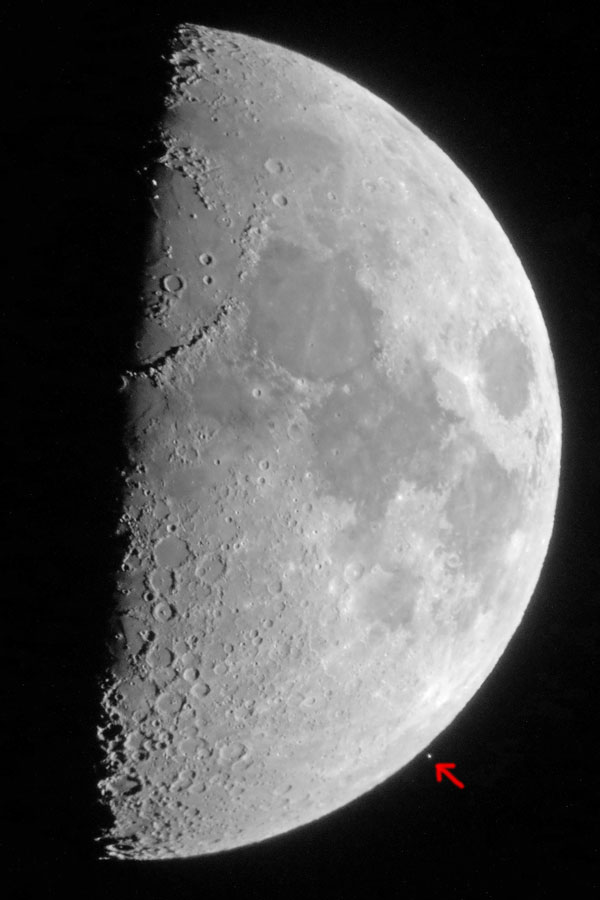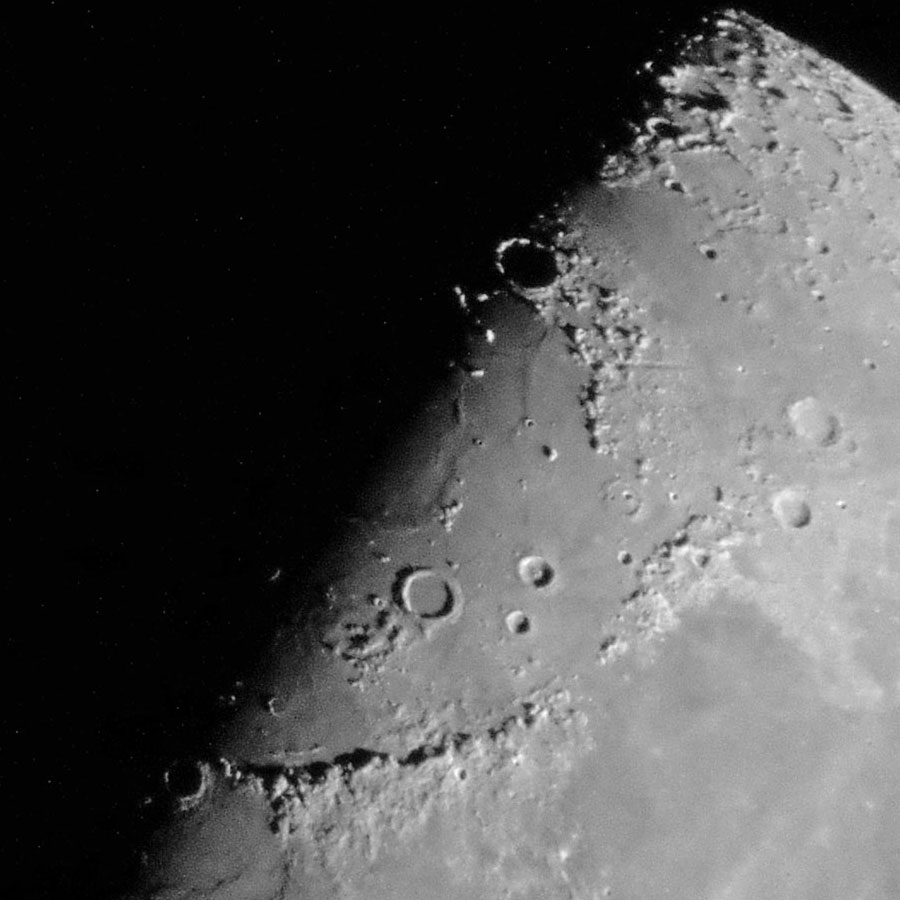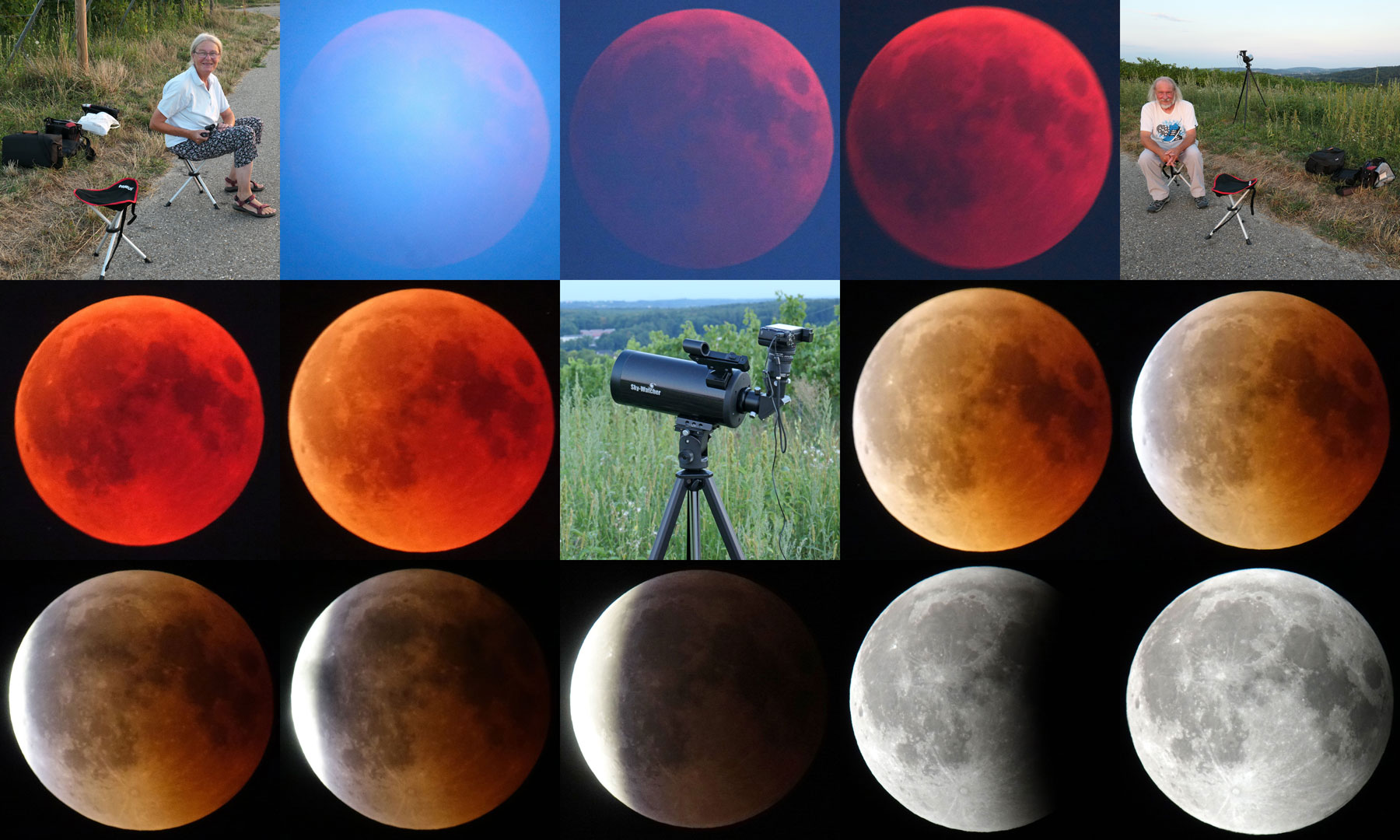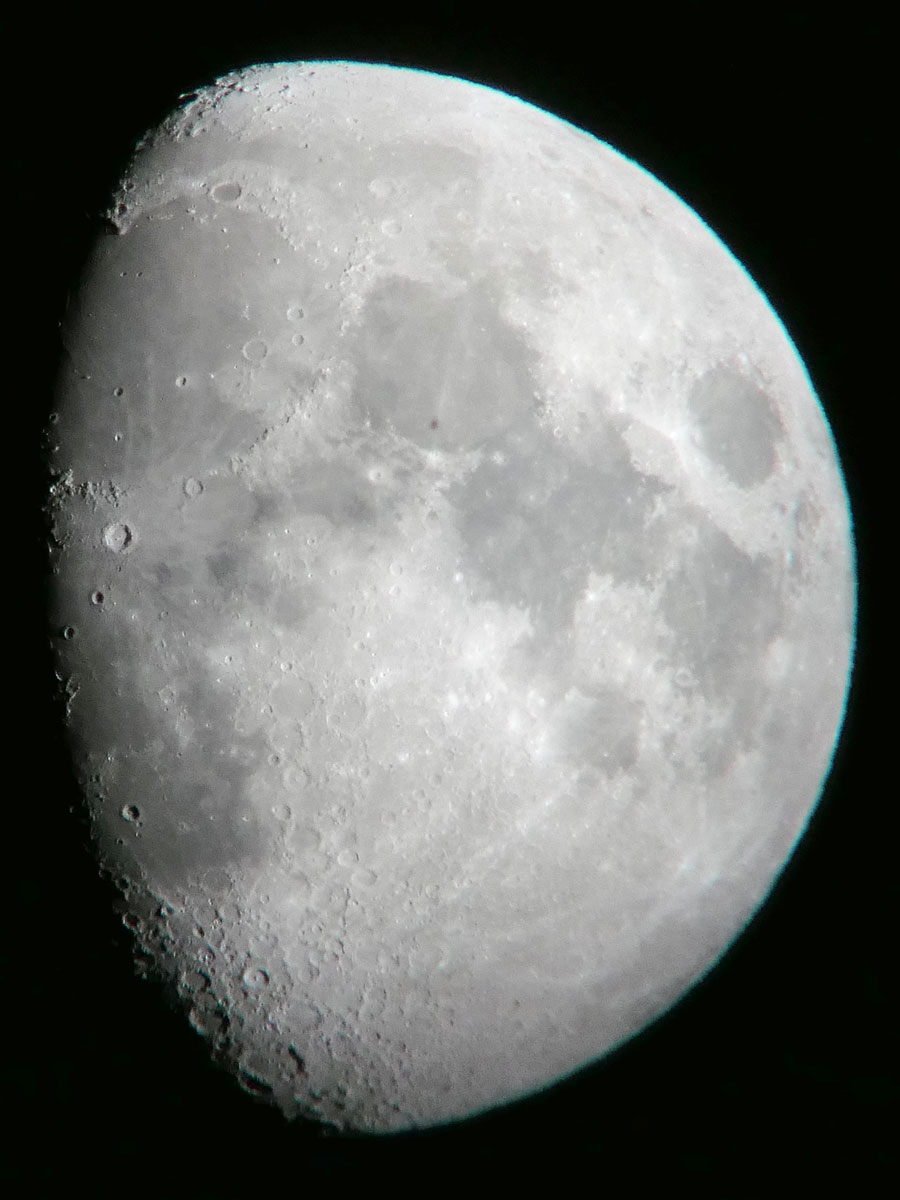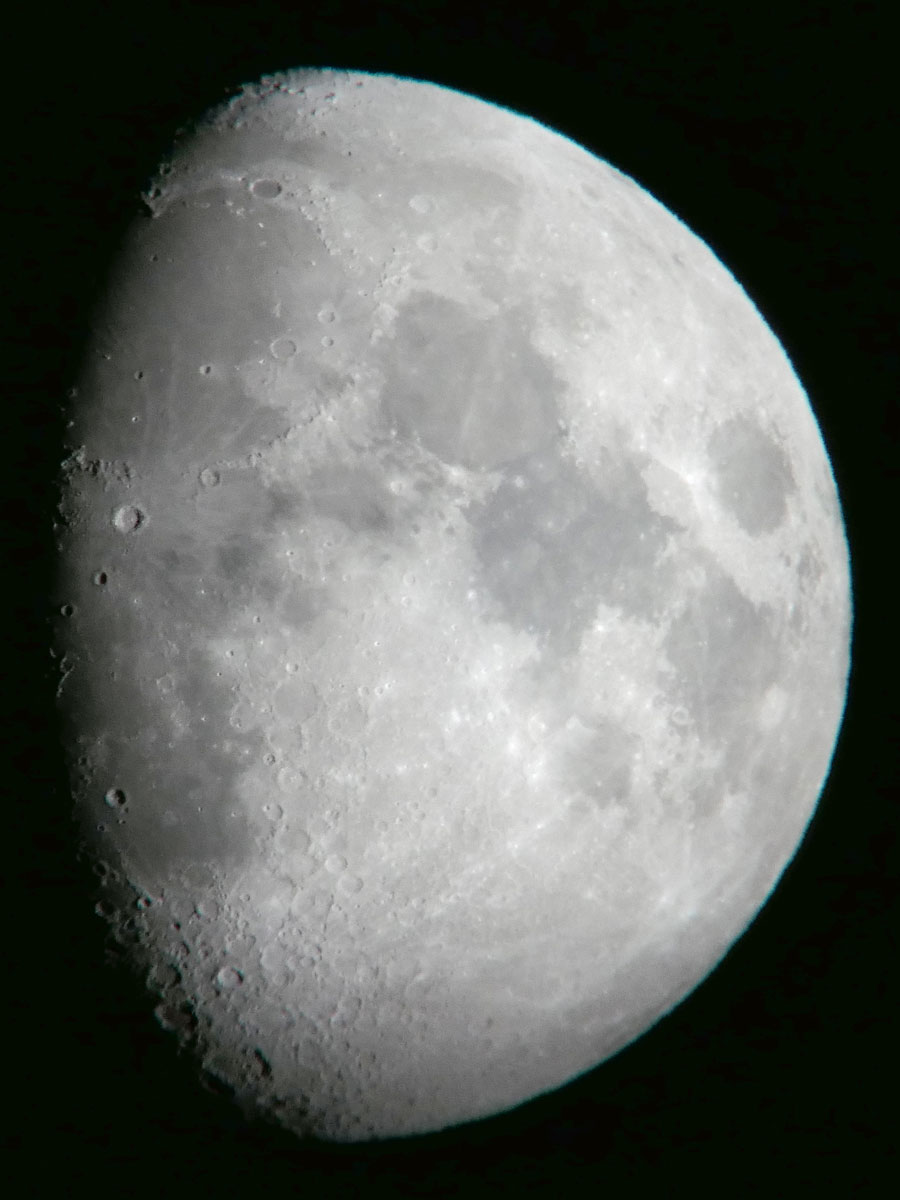Observations of the Sun, the Moon, and Planets 2018
Observation Overview | Special Events | References
It was not until 2018 that I began to observe the moon a little more in detail and to document my "more important" observations. On this page, I collect, somewhat unsystematically, my observations of the moon, the sun, and the planets from 2018, which might be of interest to other beginners and are therefore described here.
Note: Older observations are listed on the "Astronomy" overview page. The same applies to deep sky observations.
Observation Overview
| Date 2018 |
Objects Observed | Location | Devices Used | Eyepieces and Cameras Used | Remarks | Further Remarks |
| Feb 22 | Moon | Skymax-102, Skymax-127 | not documented; Ricoh GR | Infinity 76 Skymax-102/127 with GR and 1:50 method for the moon |
"Children telescope" tested once again | |
| Feb 23 | Moon | Skymax-102, Skymax-127 | 24 mm, 32 mm; Ricoh GR | Skymax-127 with Leica M at T-mount: Covering of Aldebaran;
later also Ricoh GR 1:50 for the moon (Plato) Skymax-102 visually and with Ricoh GR 1:50 for covering of Aldebaran and later the moon (Plato) |
Half Moon, covering of Aldebaran, Plato at the terminator | |
| Feb 24-26 | Moon | Skymax-102 | not documented; Ricoh GR | Skymax-102 visually and Ricoh GR 1:50 for the moon | Saw the "golden handle" (Montes Jura) on February 25. | |
| Feb 27 | Moon | Skymax-102, Skymax-127 | 24 mm, 32 mm; Ricoh GR and Leica M | Skymax-102 with Ricoh GR and Leica M, both 1:50 with 24 mm, later
fix at 32 mm Skymax-127 with Ricoh GR and Leica M, both fix at 32 mm |
Tests with camera fixed to eyepiece (Leica M); Ricoh GR fixed using Digiklemme 1 | |
| Feb 28 | Moon (two days before Full Moon) | Skymax-102, Skymax-127 | 32 mm; Leica XV | Skymax-102 with Leica XV fix at 32 mm, about 50 mm focal length, 1600
ISO, -2 EV Skymax-127 with Leica XV fix at 32 mm, about 50 mm and 35 mm focal length, 1600 ISO, -2 EV2 |
Tests with camera fixed to eyepiece (Leica X Vario) | |
| Mar 7 | Venus, Mercury | TS and LT binoculars; Heritage 100P |
Venus and Mercury seen with both binoculars, Venus also seen in Heritage 100P |
First sighting of Mercury; saw only one planet at a time because
of clouds Venus seen nearly full, that is, not as a sickle, in Heritage 100P |
||
| Mar 12 | Venus, Mercury | TS and LT binoculars; Skymax-102 |
10 mm, 4 mm | Venus and Mercury seen with both binoculars. 19:15 a second round with many photos; both planets also seen in both binoculars until Venus disappeared in the clouds at the horizon. After that a short look through the Skymax-102 (10 mm, 4 mm) at Mercury |
At times both could be seen, before Venus entered the clouds at the horizon
(Mercury later as well …) (before 19 o'clock). Both just fit the view of the binoculars, but Mercury was then fuzzy: Venus at the bottom at "7", Mercury on top at "1". Mercury in Skymax-102: Rainbow-colored, fuzzy disk that quickly moved out of the field of view… |
|
| Mar 14 | Venus, Mercury | TS and LT binoculars | Venus and Mercury seen with both binoculars. | Both just fit the view of the binoculars, but Mercury was then fuzzy: Venus at the bottom at "7", Mercury on top at "1". No clouds, we were able to see Venus disappear at the horizon. | ||
| Mar 18 | Venus, Mercury | Kellinghusen | Eyes | Venus and Mercury seen with naked eyes | Saw both during a walk. | |
| Mar 19 | Venus, Mercury, Moon | Erkerode | Eyes | 24 mm | Ash-gray crescent of the moon, Venus, and Mercury seen with naked eyes | In the car driving to Erkerode and in Erkerode (there, Venus was nearly hidden, everything was behind trees...) |
| Mar 20 | Venus, Moon, Jupiter | Erkerode | Eyes; TS and LT binoculars | Crescent of the moon and Venus
seen with naked eyes Jupiter (1 a.m.) seen in binoculars |
Saw moon and Venus from within the car, but no Mercury… (about
19 o'clock) Jupiter: Astrid may have seen moons, Gerd did not... |
|
| Mar 21 | Venus, Mercury, Moon | Eyes; TS and LT binoculars | Crescent of the moon, Venus, Mercury seen with the naked eye and with binoculars | clear skies, last sighting of Mercury with the naked eyes (and as such...) | ||
| Mar 24 | Moon (Half Moon) | Explorer 150PDS | 10, 7, 4 mm; 7 mm with 2x focal extender; Ricoh GR | Half Moon with Explorer 150PDS and Ricoh GR in 1:50 mode | Photos of the moon in diverse magnifications (sizes) | |
| Mar 25 | Moon (after Half Moon) | Skymax-127 | 32 mm | Shortly after Half Moon with Sony RX100 M4 mounted fix to the 32 mm Digiscope eyepiece | Moon photos done with hand control and on the Heritage 100P Dobsonian base | |
| Mar 29 | Moon (two days before Full Moon) | Skymax-127 | 32 mm; Sony RX100 M4 | Two days before Full Moon with Sony RX100 M4 mounted fix to the 32 mm Digiscope eyepiece | Moon photos done with hand control and on the Heritage 100P Dobsonian base | |
| Jul 27-28 | Total eclipse of the Moon (Blood Moon) | Skymax-102 on Revue tripod | 32 mm; Sony RX100 M4 | Total eclipse of the Moon with Sony RX100 M4 mounted fix to the 32 mm Digiscope eyepiece | Moon photos done with hand control and on Revue tripod | |
| Aug 2 | Jupiter, Saturn | Skymax-102 | 16 mm, 10 mm, 7mm (Saturn only) | Jupiter > 3 moons; Saturn > nice ring | ||
| Aug 3 | Jupiter, Saturn | Skymax-102, Skymax-127 | 32 mm; Sony RX100 M4
| SM-102: Jupiter > 4 moons; Saturn > nice ring Skymax-127: Saturn > nice ring Sony RX100 M4 mounted fix to the 32 mm Digiscope eyepiece |
Photos of Jupiter only with Skymax-102, photos of Saturn taken with both tubes | |
| Aug 5 | Jupiter, Saturn, Venus | Skymax-127 | 32 mm; Sony RX100 M4 | SM-127: Jupiter > moons; Venus > crescent; Mars > orange
disk Sony RX100 M4 mounted fix to the 32 mm Digiscope eyepiece |
Photos of Jupiter, Mars and Venus taken with Skymax-127 | |
| Aug 10 | Jupiter, Saturn, Mars | Skymax-127 | 32 mm, 16 mm | Saturn > nice ring; Jupiter > 3 moons; Mars with the naked eye | ||
| Aug 11 | Jupiter, Saturn, Mars | Skymax-127 | 32 mm, 16 mm, 7 mm, 24 mm | Saturn > nice ring; Jupiter > 4 moons; Mars with the naked eye | ||
| Aug 14 | Jupiter, Saturn, Mars | Skymax-102, Heritage 100P | 16 mm, 10 mm, 7 mm, 4 mm (Heritage 100P only) | Saturn > nice ring,; Jupiter > 4 moons, Mars Heritage 100P (also 4 mm eyepiece): Jupiter > 4 moons; Saturn; Mars |
||
| Aug 15, 16, 18-20 | Moon, Saturn, Mars | Skymax-102, Skymax-127 on AZ Pronto mount | 32 mm; Sony RX100 M4 | Primarily photos of the moon at various stages (SM-102 and SM-127) Skymax-127: Saturn and Mars; Saturn photos with 10 mm eyepiece, SM-127, Sony 1:50 (Aug 19); on Aug 20 Mars observed briefly |
Sony RX100 M4 mounted fix to the 32 mm Digiscope eyepiece, other photos using 1:50 method (Saturn, SM-127 on Aug 19, 2018) | |
| Aug 21 | Moon | Skymax-102, Skymax-127 on AZ Pronto mount | 32 mm; Sony RX100 M4 | Further photos of the moon - golden handle (Montes Jura) handle also observed with16, 10, 7, and even 4 mm eyepiece (dead magnification) |
Sony RX100 M4 mounted fix to the 32 mm Digiscope eyepiece | |
| Aug 22 | Moon | Skymax-102, Skymax-127 on AZ Pronto mount | 32 mm; Sony RX100 M4 | Last photos of the moon in this series | Sony RX100 M4 mounted fix to the 32 mm Digiscope eyepiece | |
| Sep 12 | Moon | Heritage 100P, PS 72/432 on AZ Pronto mount | 24 mm, 16 mm, 7 mm, 4 mm, 2/3 x focal extender | Crescent moon (3rd day) PS72: Mars (108 x), Saturn (108 x) Heritage 100P: ditto |
PS72/100P: often the same with similar magnifications observed (7mm > 16+2x
FE; 4mm > 7+2x FE; both used with 24 and 16, 7, 4 mm) 100P: All in all, the PS72 seem sto have more contrast and sharpness; at high magnifications the 100P may show a brighter view (larger exit pupil), DSOs are perhaps a little bit brighter than in the PS72 |
|
| Sep 15 | Moon Saturn, Jupiter |
Heritage 100P, PS 72/432 on AZ Pronto mount, TS binoculars | 24 mm, 16 mm, 7 mm, 4 mm, 2/3 x focal extender | Half moon (nearly) PS72: moon boserved at magnifications of up to 324 x (4 mm+3x FE) Mars (108 x and more), Saturn (108 x) Heritage 100P: ditto, as the day before |
Nearly half moon (6th day) |
|
| Sep 17 | Moon (Half Moon) Saturn, Jupiter, Mars |
Sumène, France | PS 72/432 on AZ Pronto mount | UWA 4 mm, 7 mm, WA 24 mm | I started with the half moon - the chain of the craters Ptolemaeus,
Alphonsus, and Arzachel was beautiful Planets: Then I observed Saturn, Jupiter (2 x 2 moons to the right, that is, left), and Mars |
"Officially," it was half moon, but the moon was already over it |
| Sep 19 | Moon | Sumène, France | PS 72/432 on AZ Pronto mount | UWA 4 mm, 7 mm, WA 24 mm; Panasonic TZ202 | I observed the moon at up to 108
x. I also tried photos with my Panasonic TZ202 using the 7 mm eyepiece and with a focal length of 24 and 28 mm, as well as with AF and MF |
Between half and full moon; later in the evening, the moon made the Milky Way invisible... |
| Sep 20 | Moon Mars, Jupiter, Saturn |
Sumène, France | PS 72/432 on AZ Pronto mount | UWA 4 mm, 7 mm, 16 mm | Moon: craters
at the terminator seen well Planets: Mars, Saturn, Jupiter seen well |
Moon further waxing, getting brighter and brighter |
| Sep 22 | Moon | Sumène, France | PS 72/432 | UWA 4, 7, 16 mm, WA 24 mm | Moon already close to full moon (full moon was on Sep 25 very early) | |
| Sep 28 | Moon | Sumène, France | LT and TS binoculars | Moon: beautiful craters to the right (only TS and LT - PS72 already stowed away, observed moon last...) | The waning moon made the Milky Way slowly disappear again | |
| Oct 4 | Saturn | Sumène, France | PS 72/432 on AZ Pronto mount | ??? | Ring seen well | |
| Oct 5 | Saturn, Mars | Betz, France | unknown telescopes | ??? | Saturn: Ring seen well; Mars large but without structure | Betz: Diverse telescopes; planets a little disappointing |
| Oct 12 | Moon Mars, Saturn |
PS 72/432 on AZ Pronto mount | UWA 4, 7, 16, 24 mm, 3 x focal extender | Crescent of the moon (Mare Crisium) Mars and Saturn observed, also at higher magnifications, particularly Saturn (4mm/3 x = 324 x, 7mm/3 x = 185 x; 4 mm = 108 x) |
Crescent of the moon (waxing) | |
| Oct 13 | Moon | PS 72/432 on AZ Pronto mount, Heritage 100P | UWA 4, 7, 16, 24 mm | PS72 und 100P: Crescent of the moon (Mare Crisium already fully visible) | Crescent moon (waxing) | |
| Oct 14 | Moon | PS 72/432 on AZ Pronto, Infinity 76 | UWA 4, 7, 16, 24 mm | Infinity76: Crescent of the moon PS72: Crescent of the moon |
Crescent moon (waxing) | |
| Nov 16 | Moon | PS 72/432 on AZ Pronto mount | UWA 7 mm | PS72: Half moon; Sony RX 100 M4, 1:50 method | Half moon (a little more) | |
| Nov 17 | Moon | PS 72/432, Skymax-127, both on AZ Pronto mount | 32 mm; UWA 4, 7, 16 mm; 3 x focal extender (PS72); Sony RX100 M4 | PS72: Half moon; Sony RX 100 M4, 1:50 method and projection method
(3 x focal extender) SM127: Half moon; Sony RX 100 M4, 1:50 method and projection method |
Half moon (even a little more); observed Pitatus and Hesiodus (light rays) in particular (visually) | |
| Nov 18 | Moon | PS 72/432 on AZ Pronto mount | 32 mm; UWA 4, 7 mm visual; 3 x focal extender (PS72); Sony RX100 M4 | PS72: Half moon; Sony RX 100 M4, projection method (3 x focal extender) | Half moon (and even a little more) | |
| Nov 20 | Moon | PS 72/432 on AZ Pronto mount | 32 mm; UWA 4, 7 mm visually; 3 x focal extender (PS72); Sony RX100 M4 | PS72: More than Half moon; Sony RX 100 M4, projection method (3 x focal extender) | More than half moon | |
| Dec 20 | Moon | Sony RX10 M3 | Sony RX10 M3 | Sony RX10 M3 at 600 mm (and some other focal lengths); results compared with Clear Image Zoom results ; free hand shots | Much more than half moon |
All observations done in Mühlhausen/Kraichgau, except for where noted otherwise.
Special Events
February 23, 2018: Moon Covers Aldebaran
On February 23, 2018, the moon covered Aldebaran for about an hour at the early evening sky (about 17:50 to 18:50 o'clock in Mühlhausen/Kraichgau). I attempted to take photos of this event.
Photo: Aldebaran is visible again...
You can find the photos on the following page:
February 23, 2018: Crater Plato in Direct Sun Light
Photo data: February 23, 2018, Sky-Watcher Skymax-102 telescope, Ricoh GR held to the eyepiece
More information on page Sections of Moon Photos
February 25, 2018: The "Golden Handle"
When the Jura mountains appear at the terminator and are lighted by the sun while still extending "into the darkness", this phenomenon is called the "golden handle." This took place on February 25, 2018.
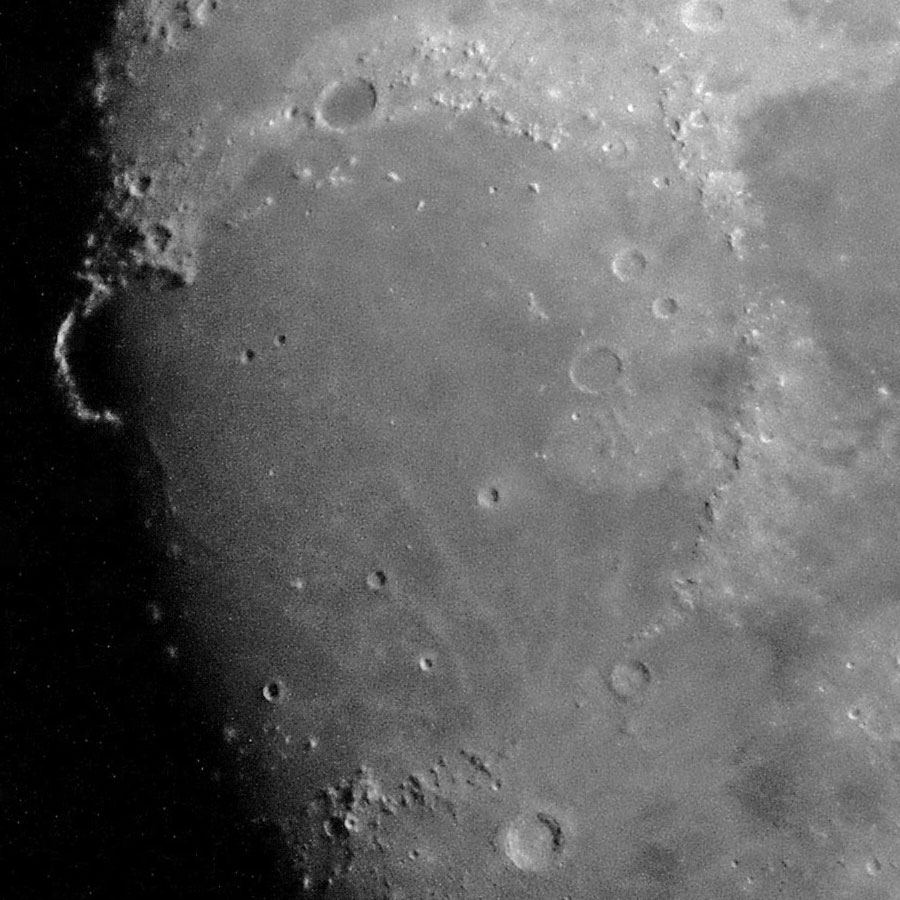 |
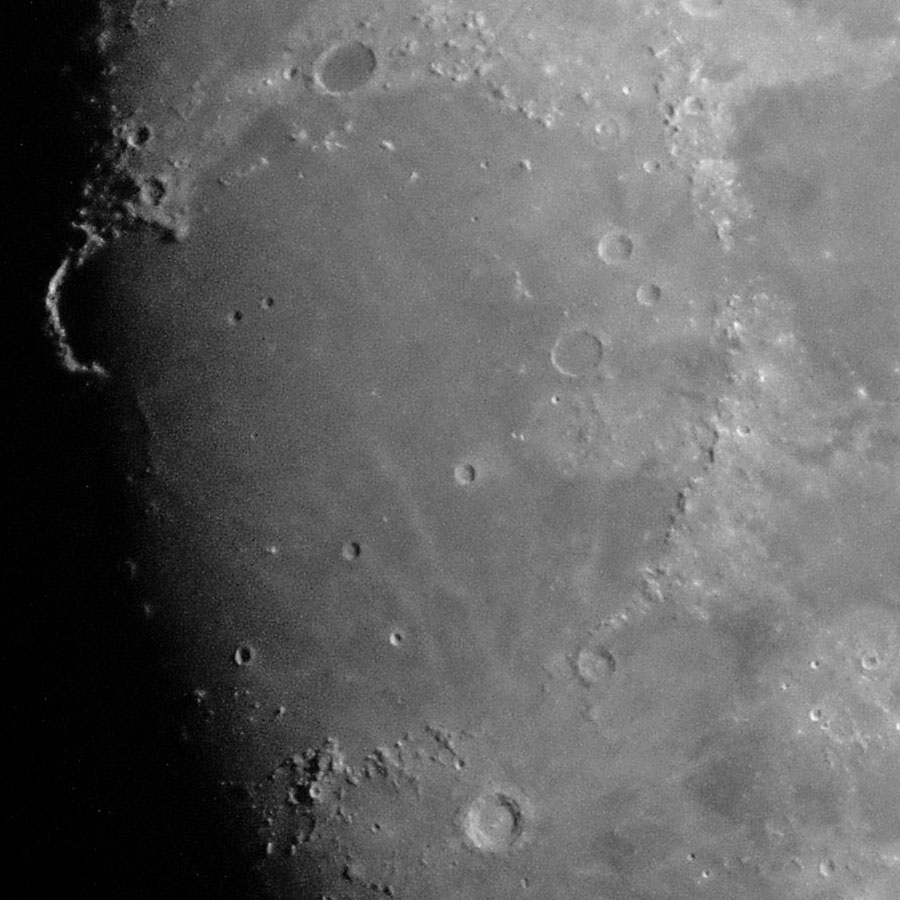 |
Photos: Two versions of the "Golden Handle" (Montes Jura, top left)
March 10-25, 2018: Mercury at the Evening Sky (Together with Venus)
Mercury was already visible in the evening sky in March this year (about March 1 to 21, 2018). We saw Mercury for the first time on March 7 and for the last time on March 21. After that, Mercury became so faint that it could no longer be seen with the naked eye. But even before, Mercury was not always easy to find, because it was still too faint against the bright evening sky or was covered by clouds. Fortunately, the brighter shining Venus was nearby and a good aid to find it. But since Venus was still nearly "full," it was not as bright as when it is closer to the earth and is a sickle.
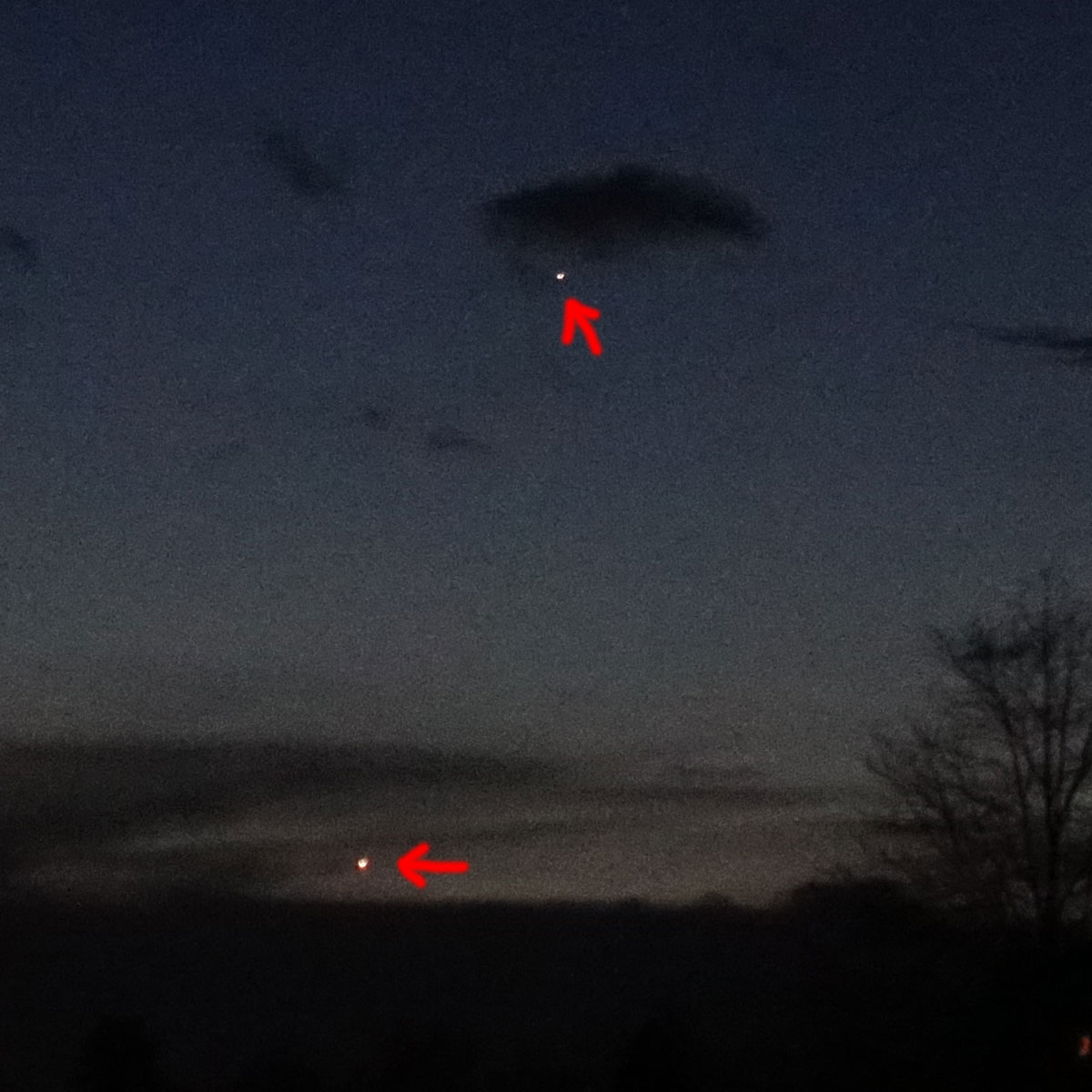 |
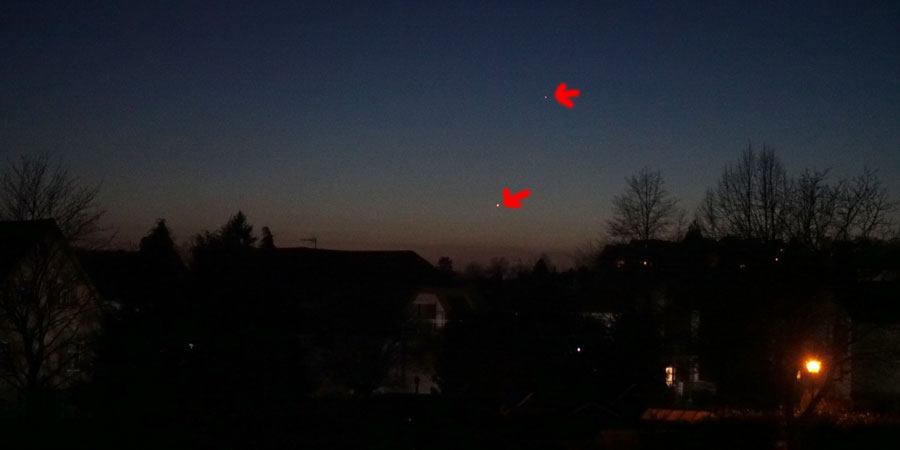 |
Photos: Mercury and Venus indicated by arrows (Mercury on top, Venus below) on March 12 (left) and 14 (right), 2018
More information on page Mercury and Venus March 2018
July 27-28, 2018: Total Eclipse of the Moon (Blood Moon)
On July 27, 2018, a total eclipse of the sun could be observed in Germany. We observed and photographed the lunar eclipse (using the Sky-Watcher Skymax-102 with Sony RX100 M4 attached and TS binoculars) on the Heiligenstein (a vineyard near Mühlhausen/Kraichgau).
I created a collage from selected photos shown above:
Total Eclipse of the Moon, July 27, 2018
More information in page Total Eclipse of the Moon (Blood Moon)
August 3 and 5, 2018: Jupiter and Saturn
Jupiter
The following photos were taken on August 5, 2018 with the Skymax-127 (half size - easier to see stripes):
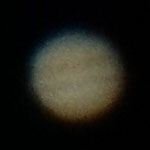 |
 |
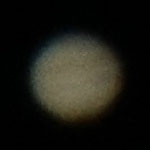 |
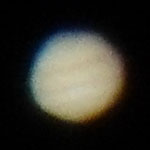 |
 |
 |
|||||
Photos cropped but not processed; the left 5 photos were taken with ISO 1600, the right one with ISO 800 |
||||||||||
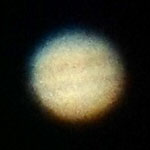 |
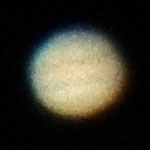 |
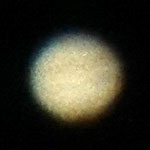 |
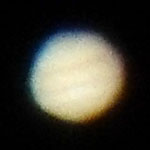 |
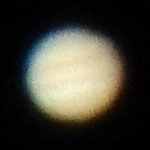 |
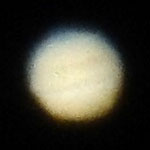 |
|||||
Photos made lighter |
||||||||||
Saturn
The following photos were taken on August 5, 2018.
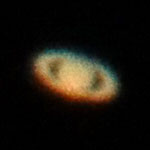 |
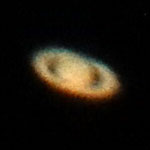 |
 |
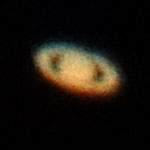 |
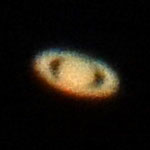 |
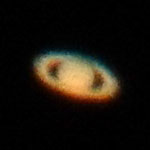 |
|||||
Skymax-102 (brighter versions) |
||||||||||
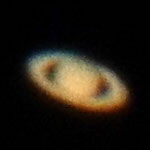 |
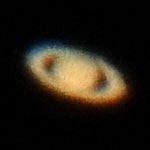 |
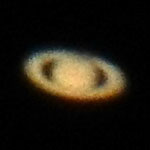 |
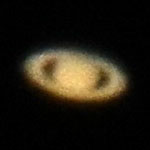 |
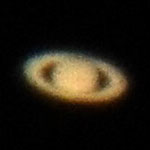 |
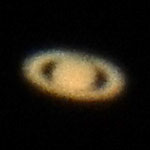 |
|||||
Skymax-127 (brighter versions) |
||||||||||
Mars
 |
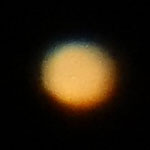 |
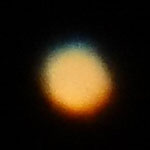 |
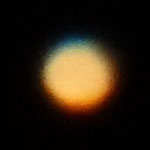 |
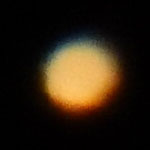 |
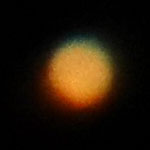 |
|||||
Skymax-127, photos cropped but not processed, except fot the right-most one (ISO 800) |
||||||||||
Venus
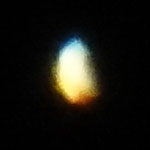 |
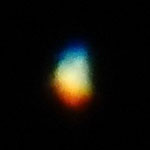 |
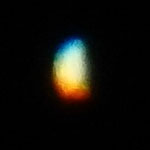 |
 |
 |
 |
|||||
Skymax-127, photos cropped but not processed (ISO 800) |
||||||||||
More information on page Jupiter, Saturn, and More - August 2018
August 19, 2018: Saturn da capo...
The followings photos of Saturn with its ring were taken on August 19, 2018 (magnification of 150 x, camera focal length of 70 mm (equiv.), scaled down).
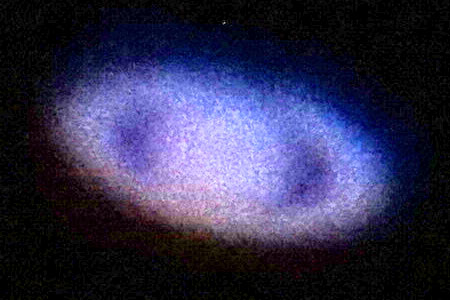 |
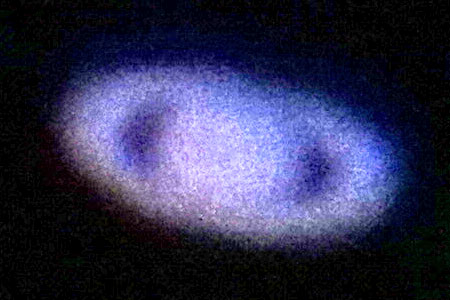 |
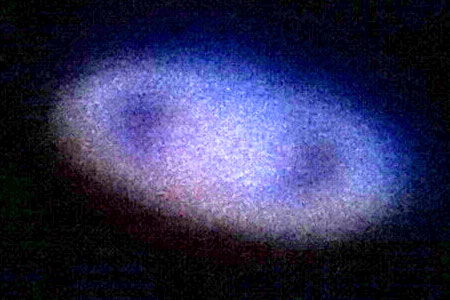 |
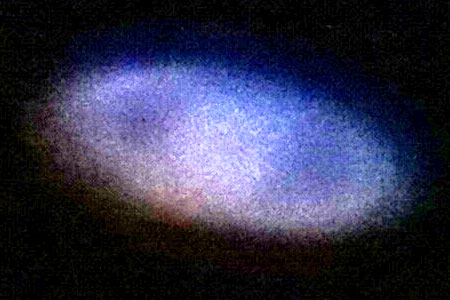 |
|||
Skymax-127, 150 x, ISO 1600, 1/30, F2,8, 70 mm (brightened) |
||||||
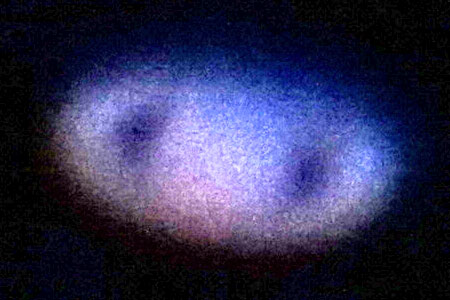 |
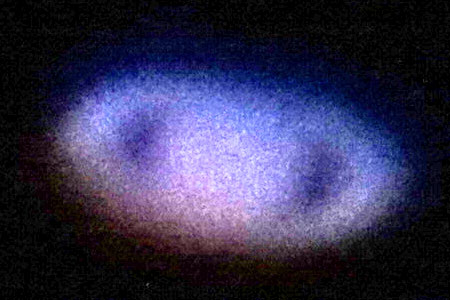 |
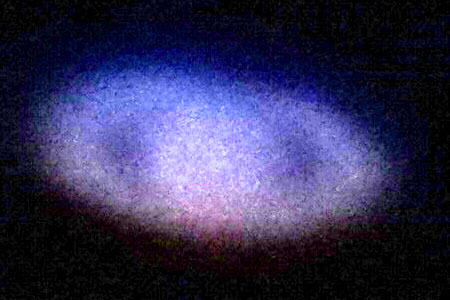 |
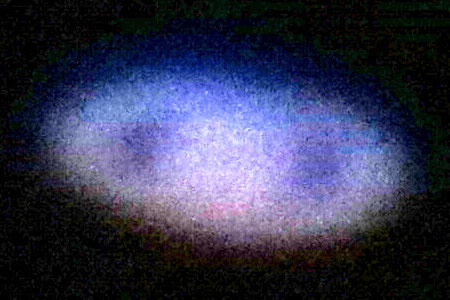 |
|||
Skymax-127, 150 x, ISO 1600, 1/30, F2,8, 70 mm (brightened) |
||||||
More information on page Jupiter, Saturn, and More - August 2018
August 21, 2018: Golden Handle da capo...
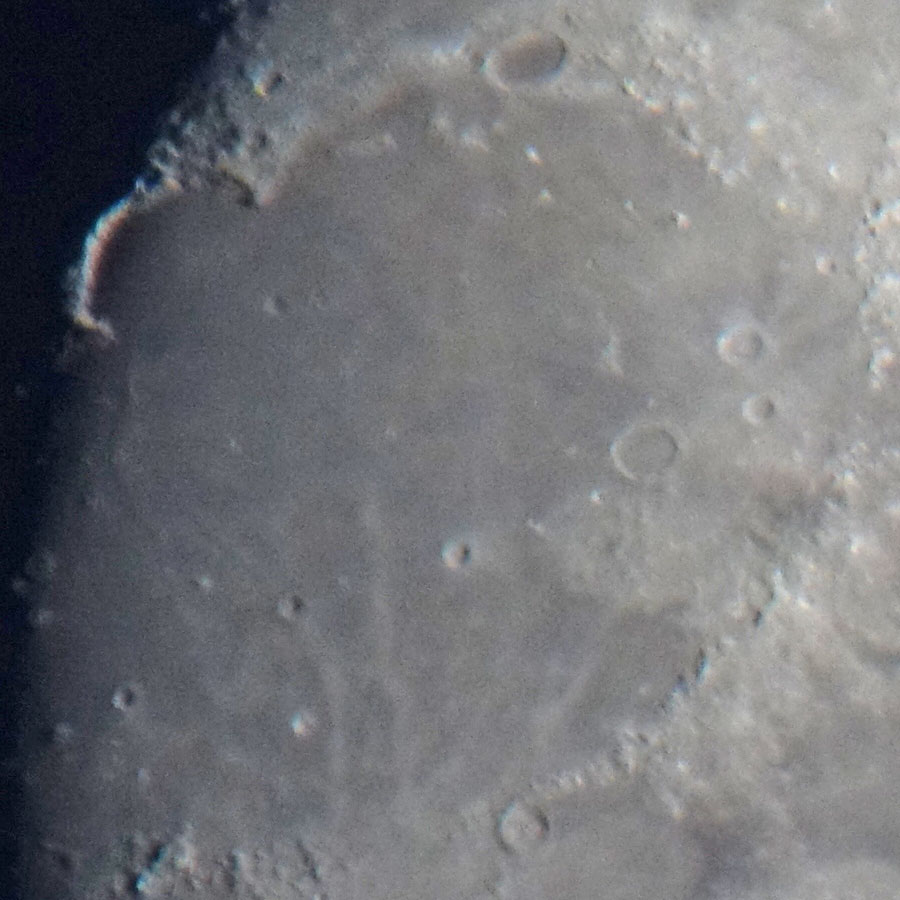 |
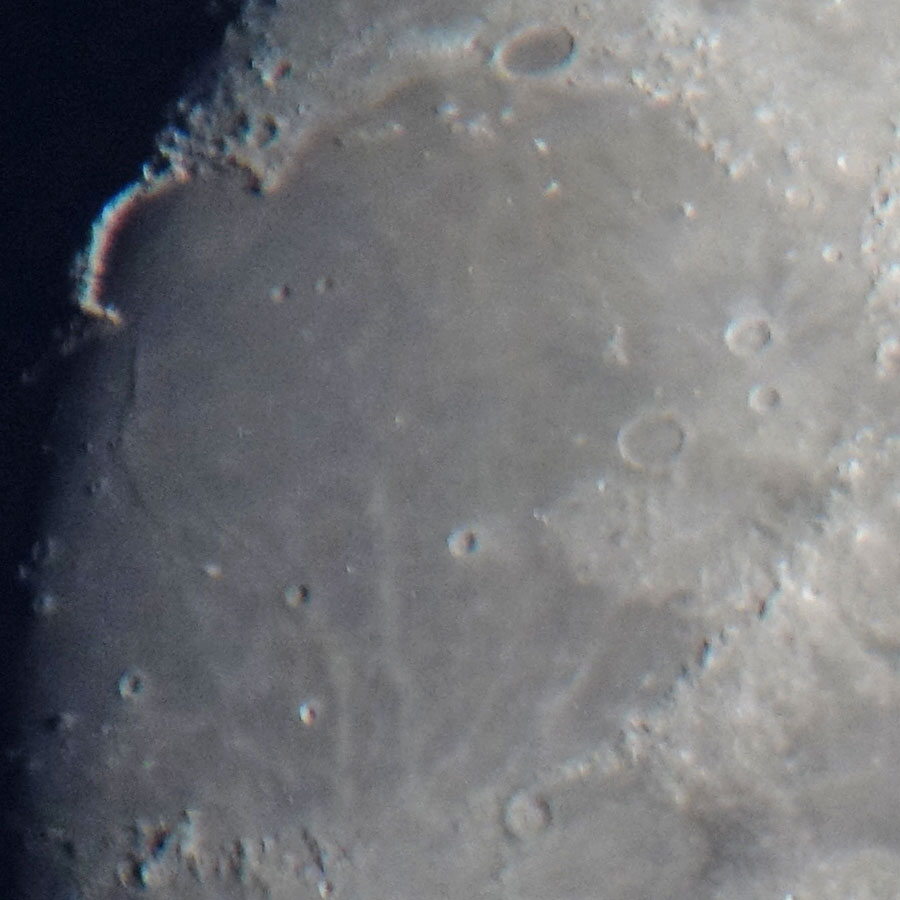 |
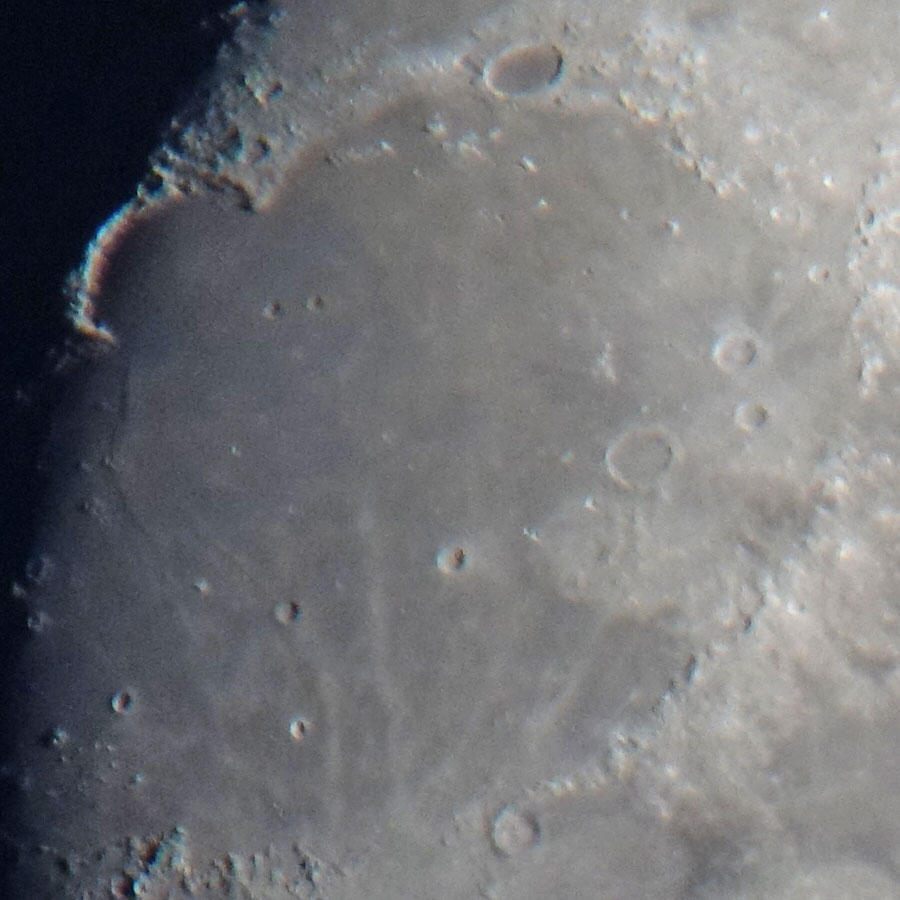 |
||
| 3200 Pixels - Skymax-102 (50 mm) |
|
3200 Pixels - Skymax-102 (50 mm) |
3200 Pixels - Skymax-102 (50 mm) |
|
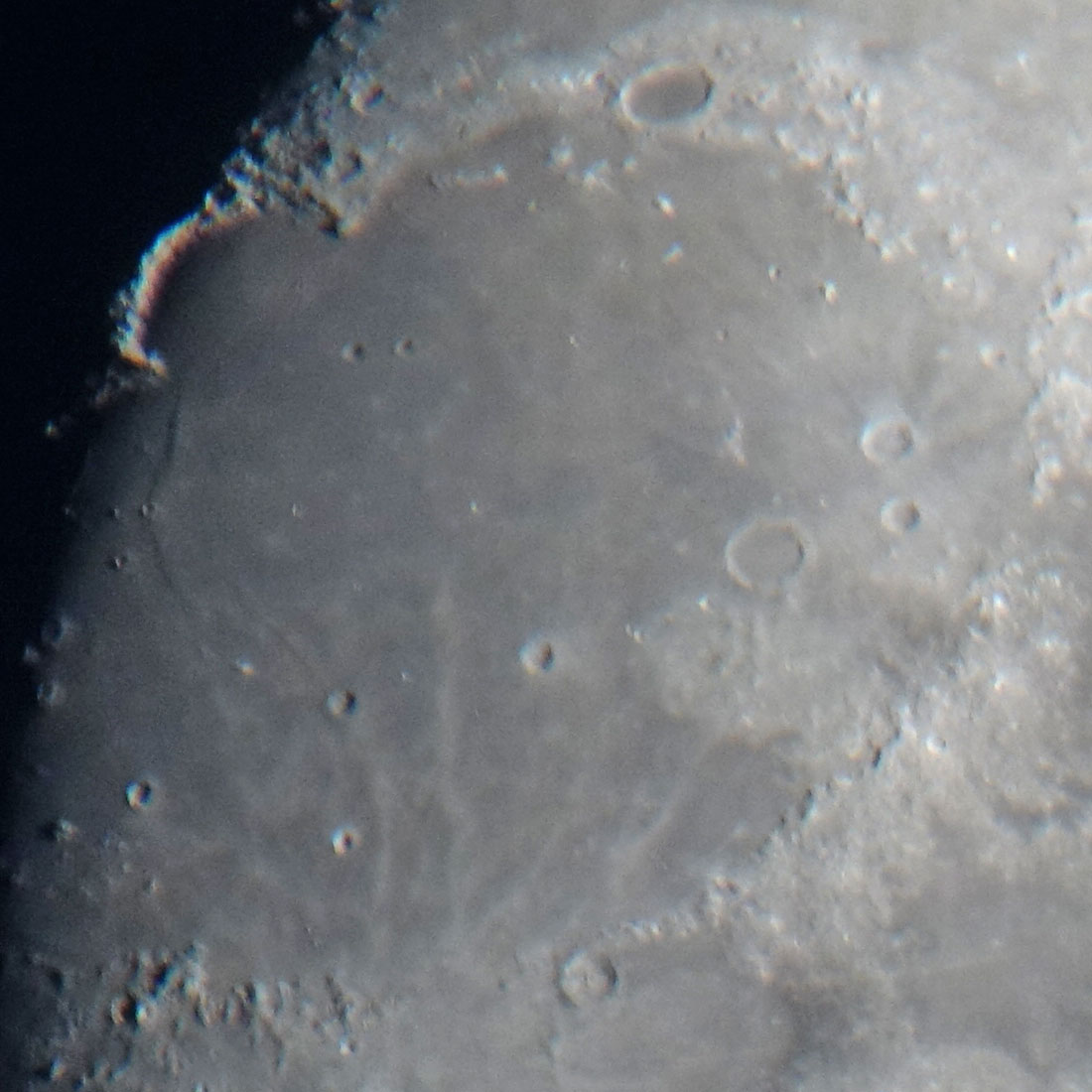 |
 |
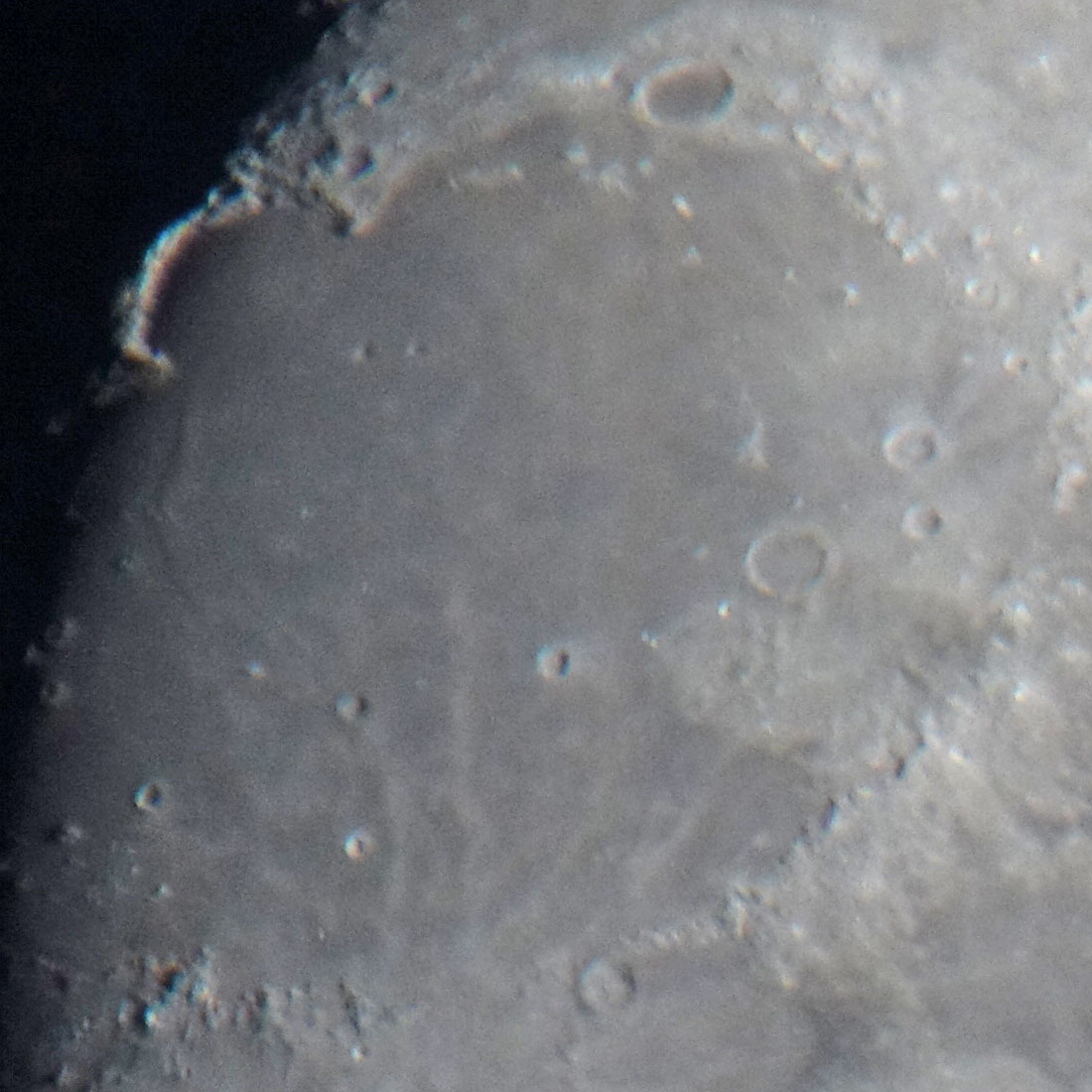 |
||
3600 Pixels - Skymax-127 (50 mm) |
|
3600 Pixels - Skymax-127 (50 mm) |
3600 Pixels - Skymax-127 (50 mm) |
More information on page Photos of the Moon August 2018
August 15-22, 2018: Different Stages of the Moon
 |
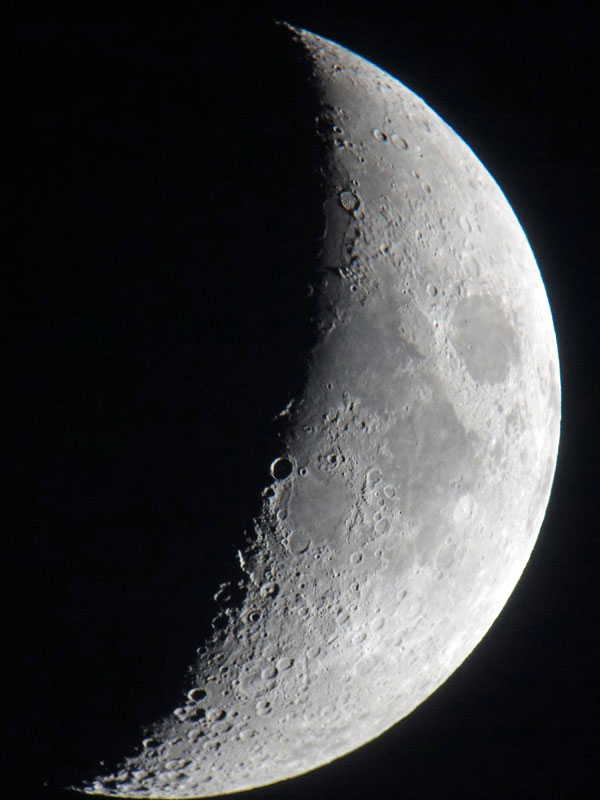 |
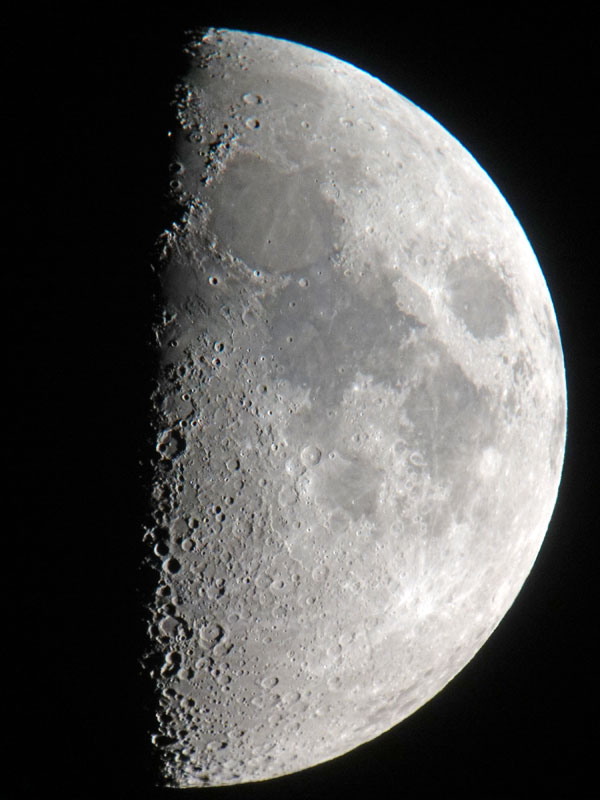 |
||
August 15, 2018 |
August 16, 2018 |
August 18, 2018 |
||
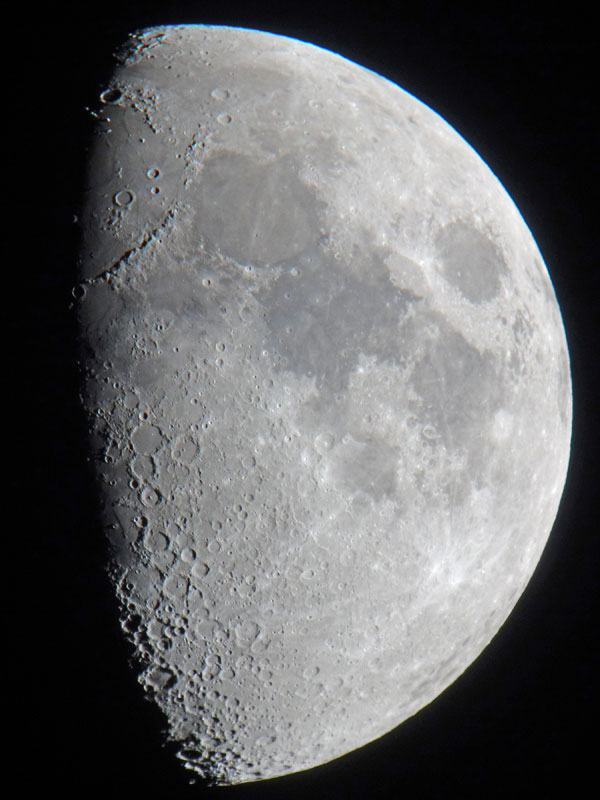 |
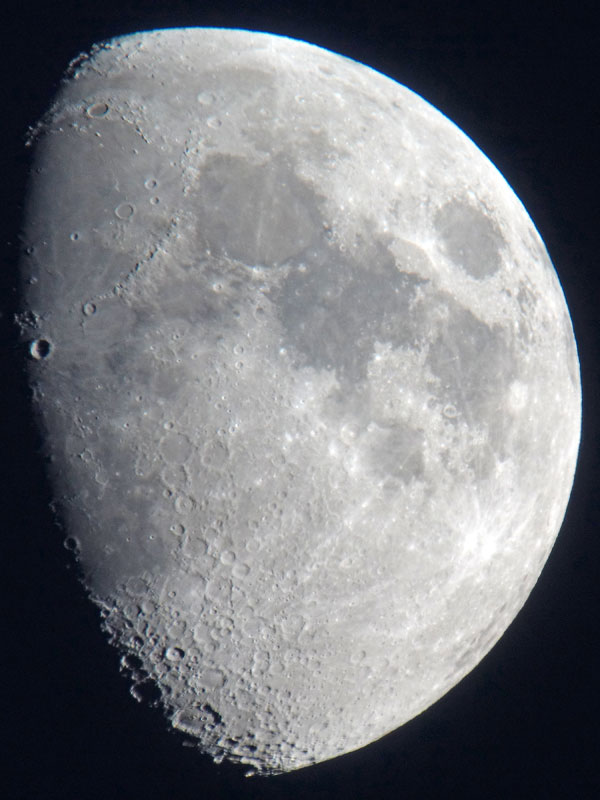 |
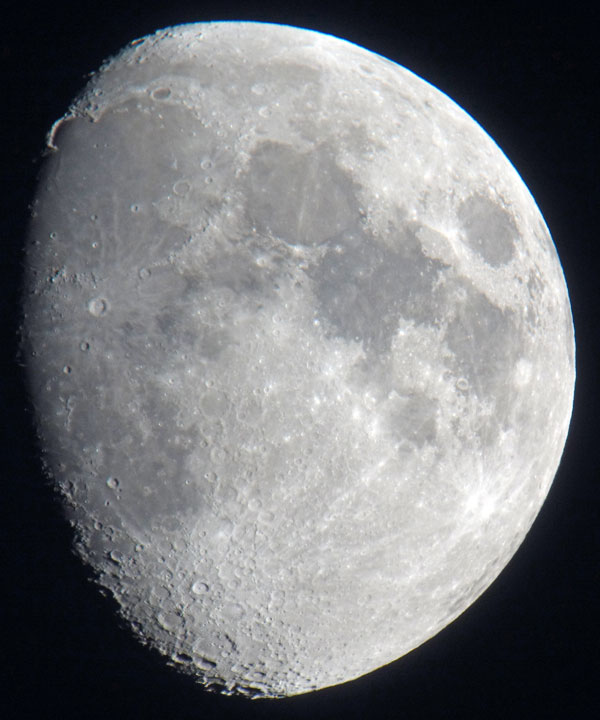 |
||
August 19, 2018 |
August 20, 2018 |
August 21, 2018 | ||
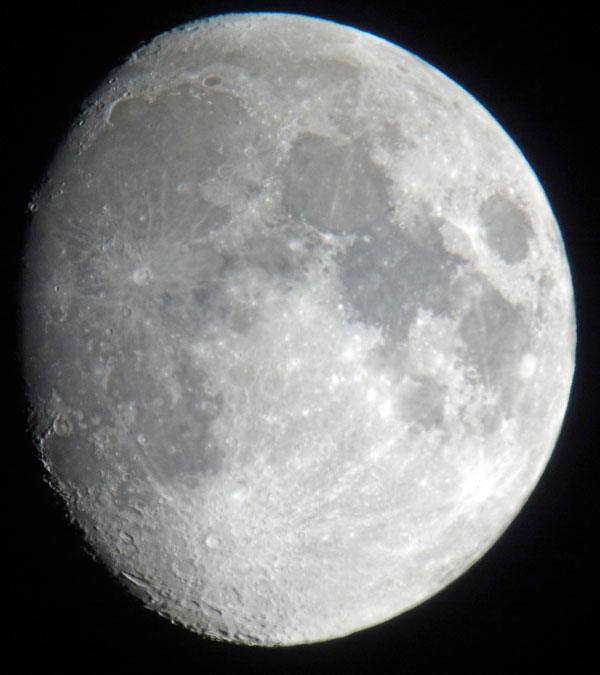 |
||||
August 22, 2018 |
More information on page Photos of the Moon August 2018
September 19, 2018: Moon Photography with New Telescope and New Camera
On September 19, 2018, I took photos of the moon in Sumène, France, using the 1:50 method, a 7 mm UWA eyepiece (magnification of about 60 x), and the Panasonic TZ202 camera. This was new in two respects: I used a new telescope and a new camera. I took two short series at ISO 400 and with manual focus, one with a focal length of 24 mm (equiv.), and another one with a focal length of 28 mm (equiv.). Here are two samples, one from each series:
| Taken with 24 mm focal length (2000 pixels version) | Taken with 28 mm focal length (2000 pixels version) |
More information on page Omegon Photography Scope 72/432 ED OTA Information (2.8" Refractor)
November 16-18, 20, 2018: Moon Photography
Note how the look (shading) of certain structures changes during the three days because the sun rays hit the moon at different angles and the terminator is moving westwards.
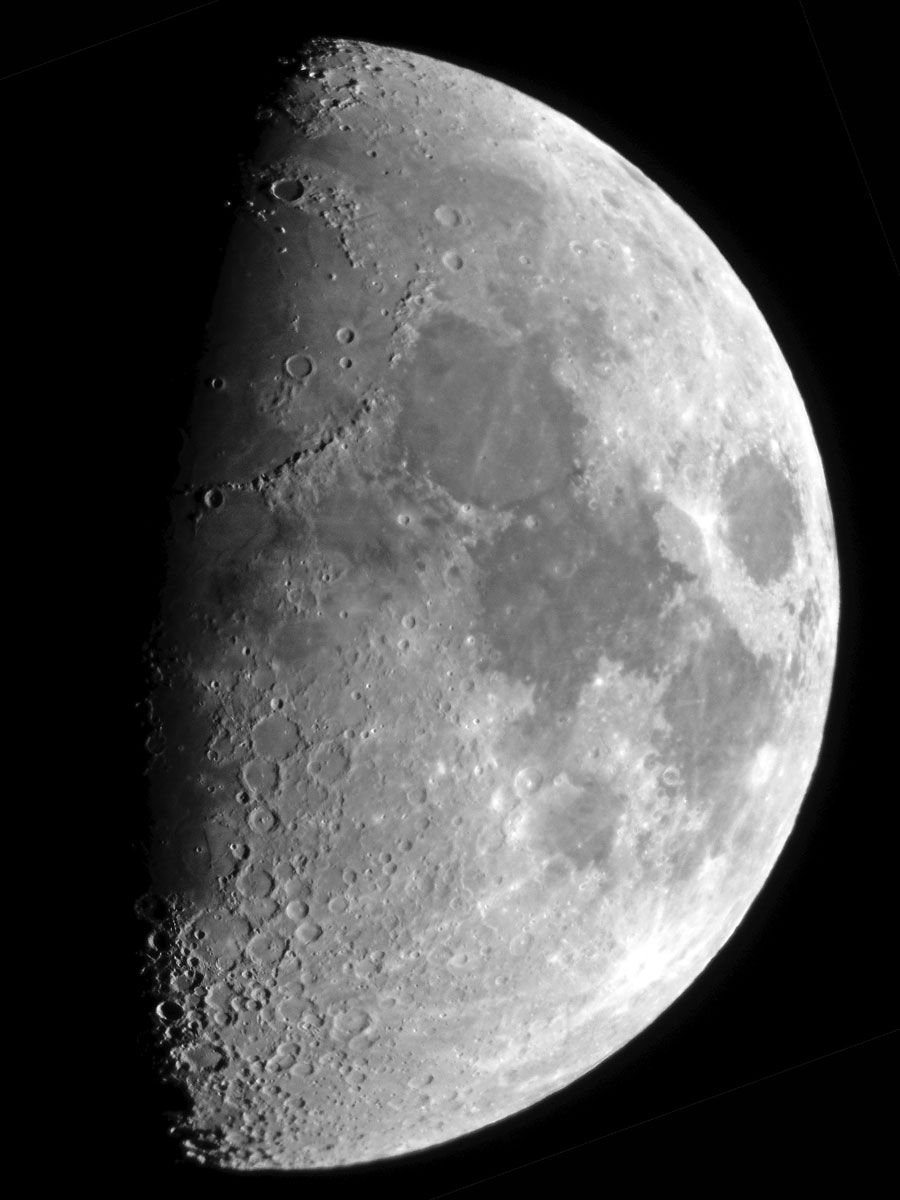 |
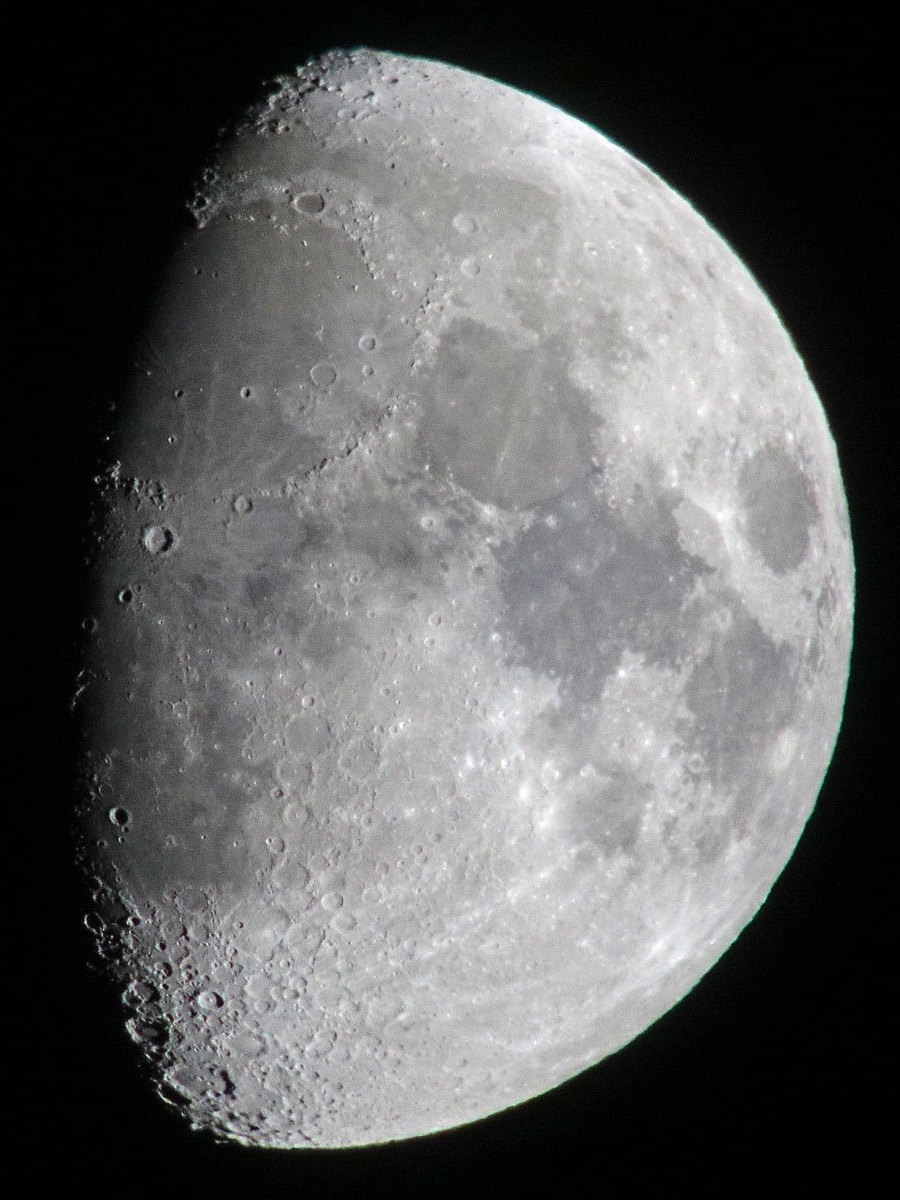 |
|
Nov 16, 2018 - PS72 (rotated a bit...) |
Nov 17, 2018 - PS72 |
|
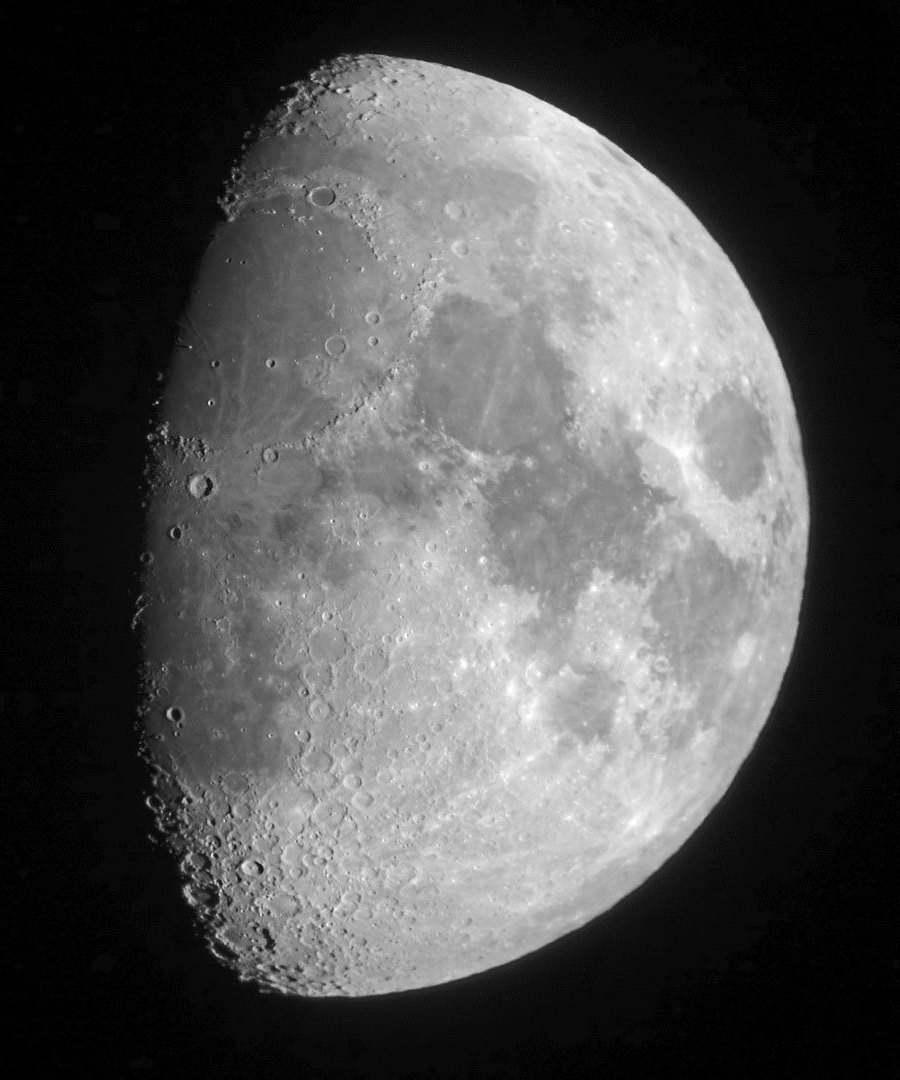 |
 |
|
Nov 17, 2018 - Skymax-127 |
Nov 18, 2018 - PS72 |
|
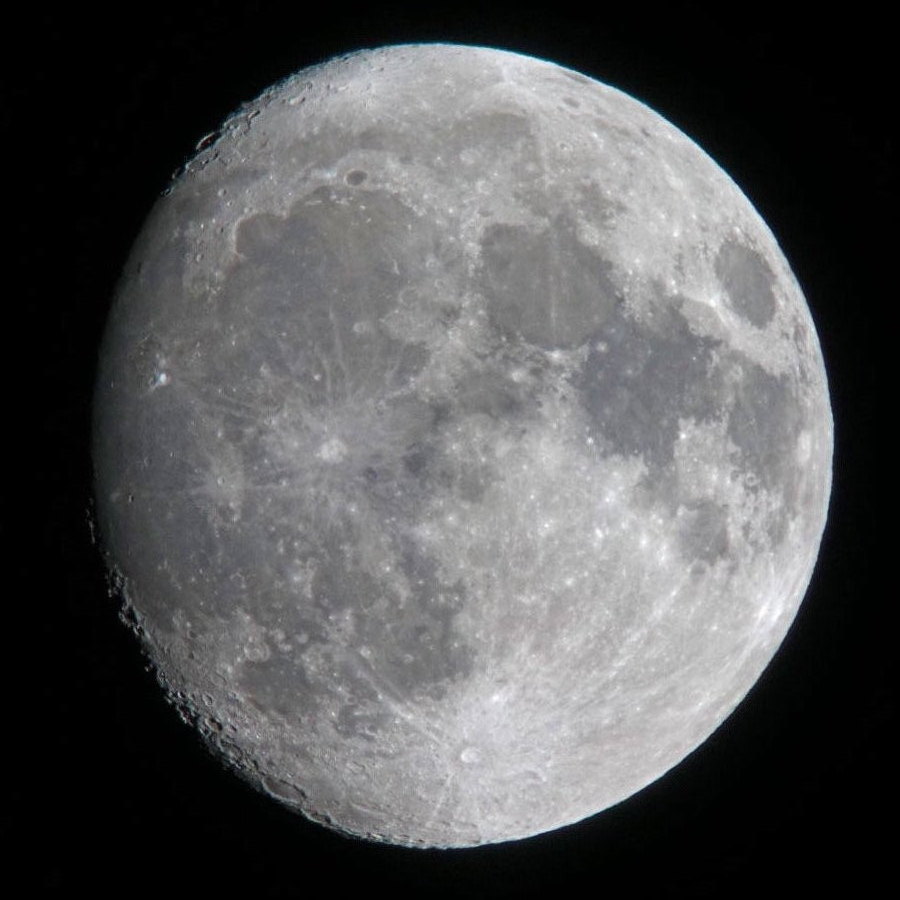 |
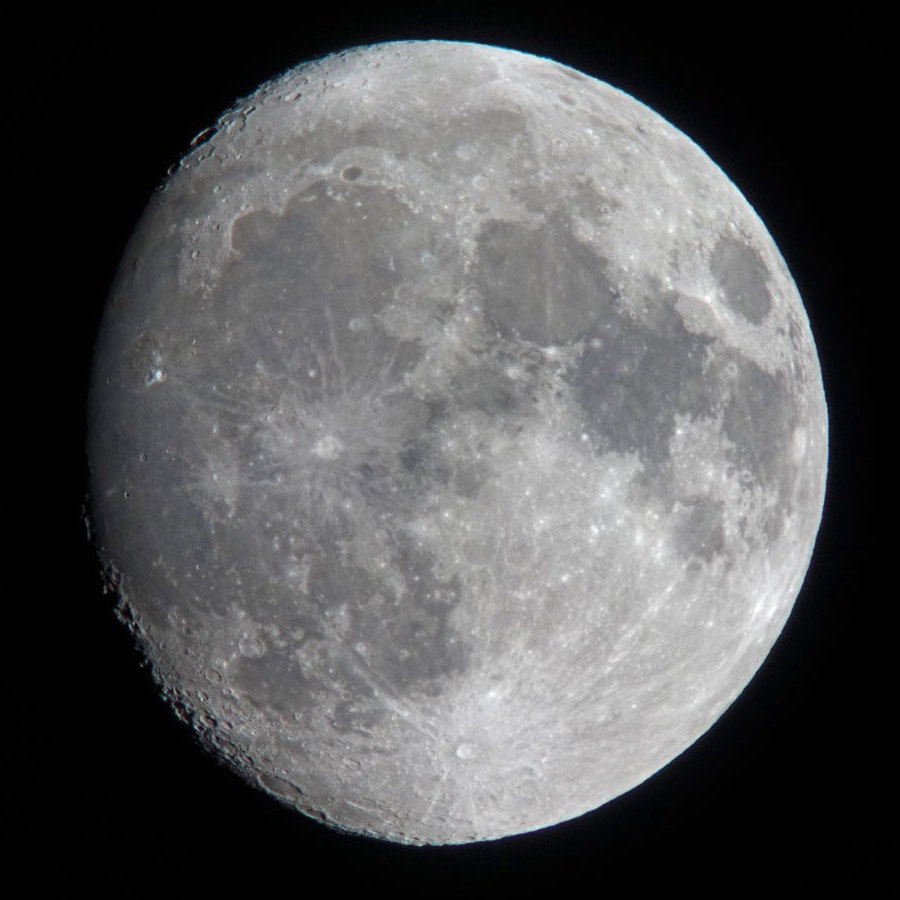 |
|
Nov 20, 2018 - PS72 |
Nov 20, 2018 - PS72 |
More information on pages Photos of the Moon November 2018 and Photos of the Moon November 20, 2018.
December 20, 2018: Moon Photography with Sony RX10 M3
Here, I present photos of the moon that I took on December 20, 2018 using the Sony RX10 M3 with either optical zoom or Clear Image Zoom. This is a "highlight" insofar, as I just used a camera to take photos of the moon...
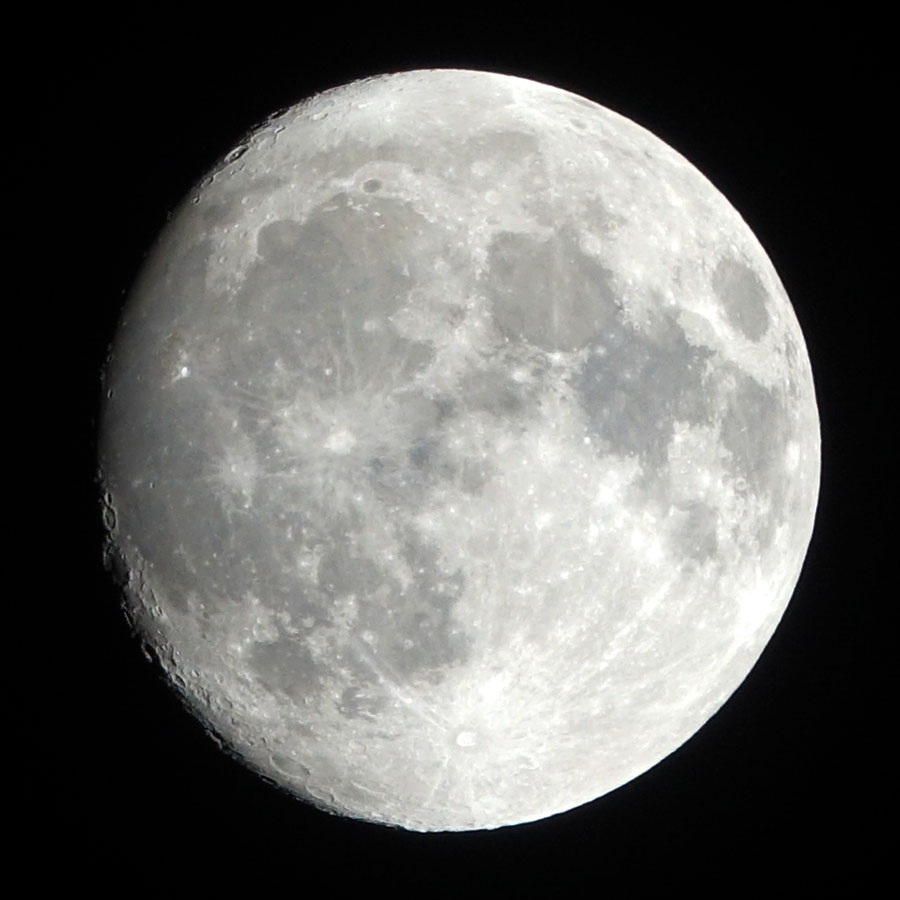 |
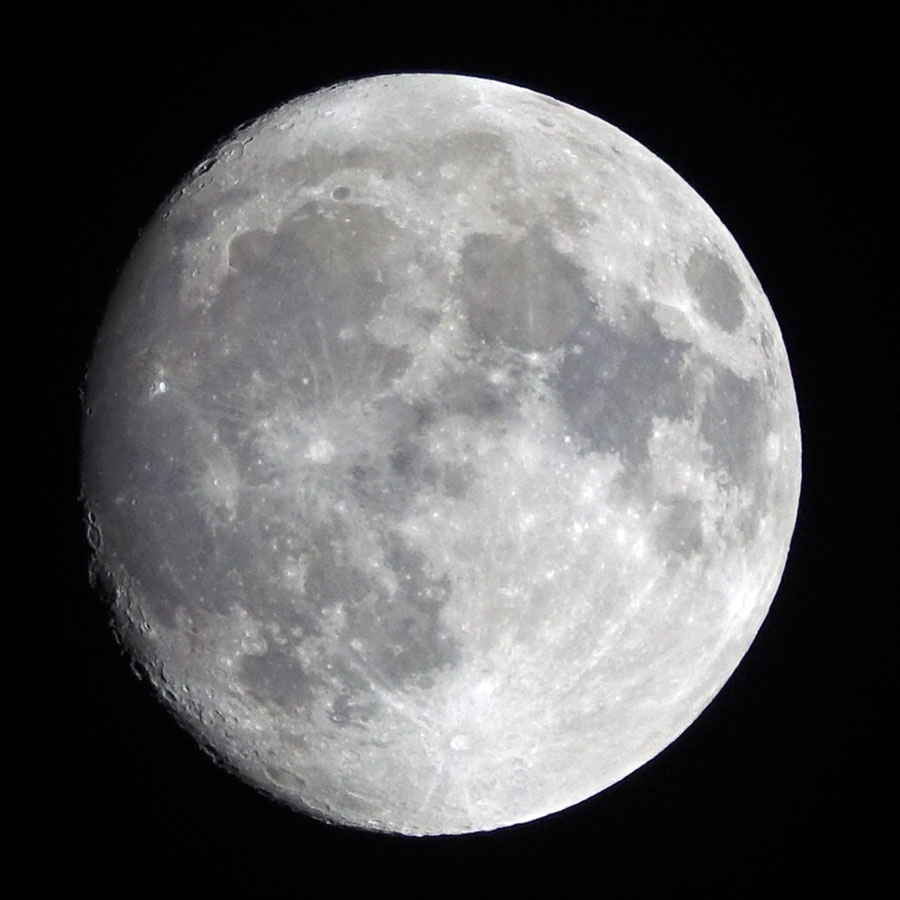 |
|
2000 Pixel - Clear Image Zoom, 1200 mm |
|
2000 Pixel - optical zoom, 600 mm |
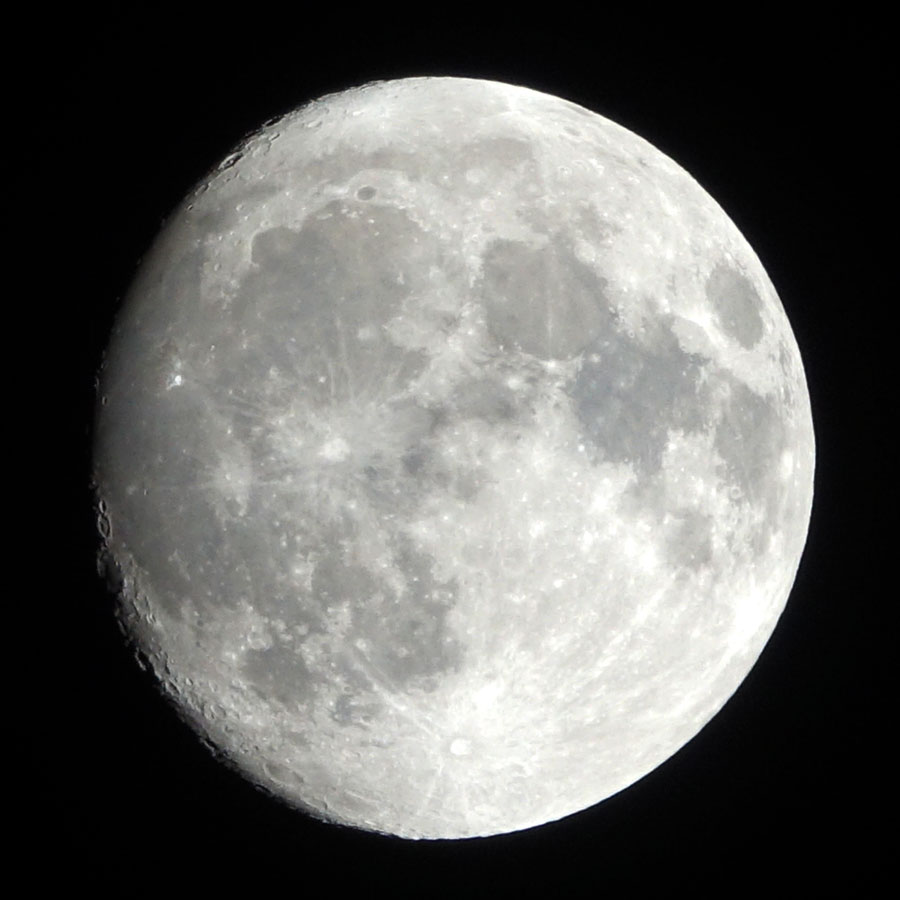 |
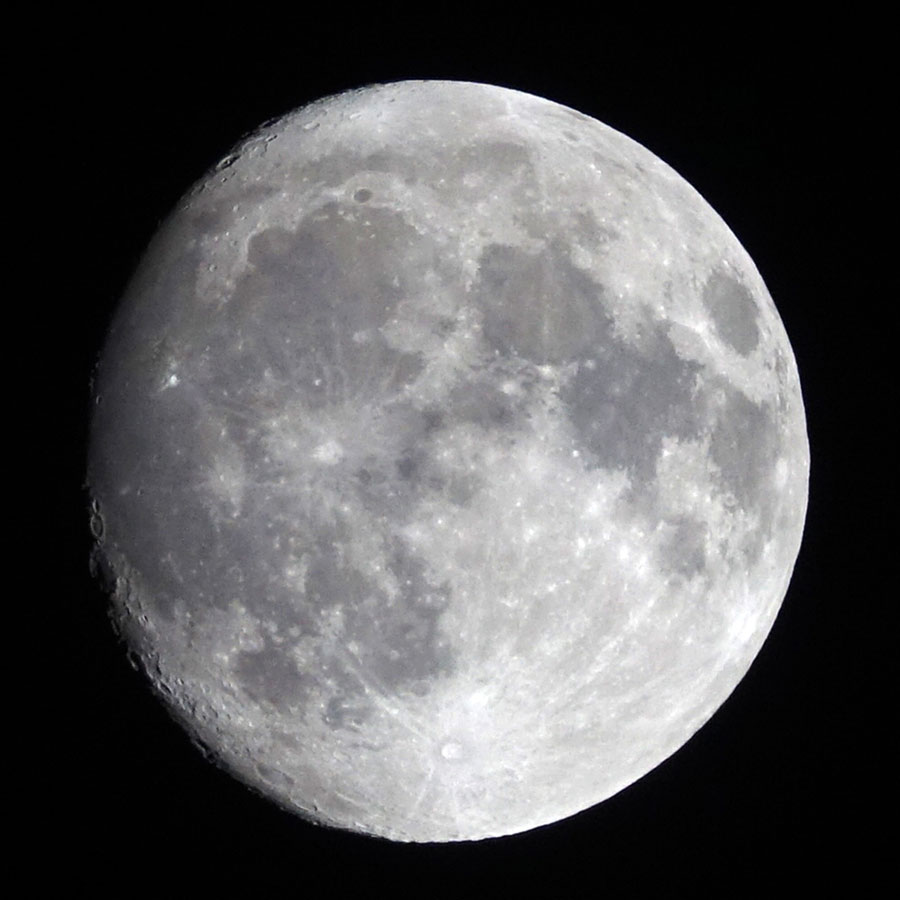 |
|
2000 Pixel - Clear Image Zoom, 1200 mm |
|
2000 Pixel - optical zoom, 600 mm |
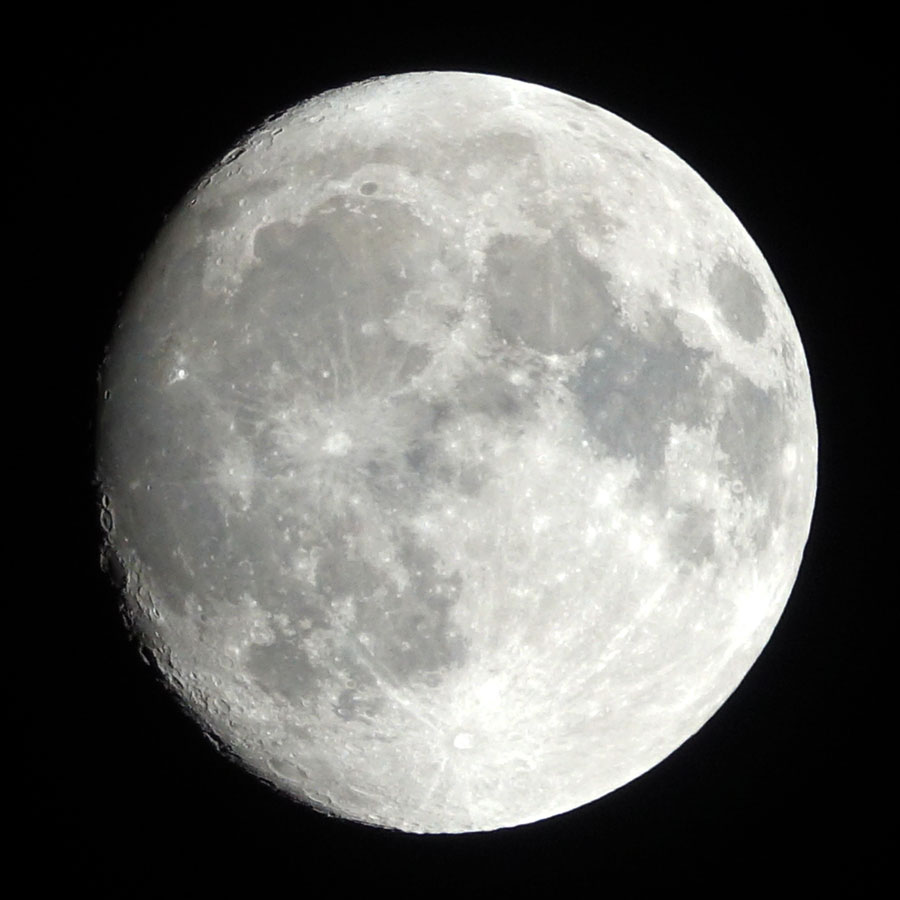 |
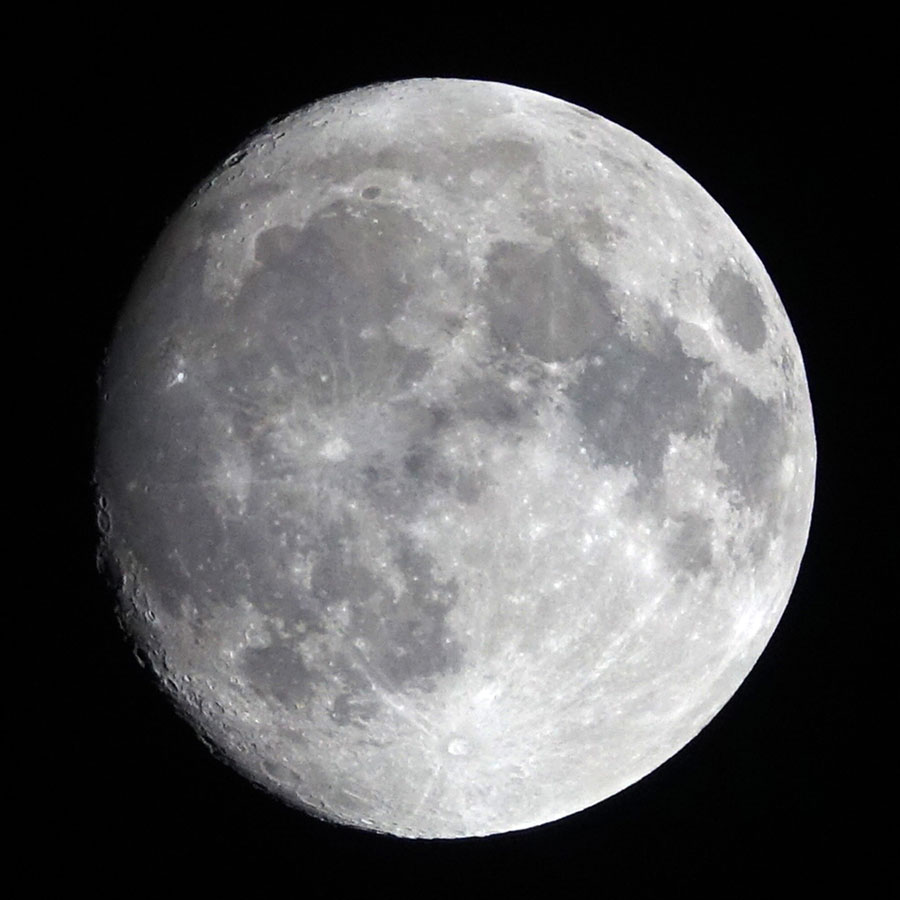 |
|
2000 Pixel - Clear Image Zoom, 1200 mm |
|
2000 Pixel - optical zoom, 600 mm |
More information on page Photos of the Moon December 20, 2018.
References
Links
- Mond (Wikipedia): de.wikipedia.org/wiki/Mond
- Moon (Wikipedia): en.wikipedia.org/wiki/Moon
- Virtual Moon Atlas: ap-i.net/avl/en/start
Books (in German)
- Lambert Spix (2013, 3. Auflage). moonscout - Mondmeere, Krater und Gebirge einfach finden und beobachten. Oculum-Verlag. ISBN 978-3-938469-58-3
- Lambert Spix & Frank Gasparini (2011, 1. Auflage). Der Moonhopper. Oculum-Verlag. ISBN 978-3-938469-54-5
- Ronald Stoyan, Hans-Georg Purucker (2013, 1. Auflage). Reiseatlas Mond. Oculum-Verlag. ISBN 978-3-938469-64-4
- Robin Scagell (2016). 101 Himmelsobjekte, die man gesehen haben muss, Kosmos
Verlag (out of print)
www.kosmos.de/buecher/ratgeber/astronomie/einsteiger/6527/101-himmelsobjekte-die-man-gesehen-haben-muss
On this Website
- Sky-Watcher Heritage 100P Information (4" Dobson)
- Sky-Watcher Skymax-102 OTA Information (4" Maksutov-Cassegrain)
- Sky-Watcher Skymax-127 OTA Information (5" Maksutov-Cassegrain)
- Sky-Watcher Explorer 150PDS Information (6" Newton)
- Omegon Photography Scope 72/432 ED OTA Information (2.8" Refractor)
- Sky-Watcher AZ Pronto Mount Information
- My Binoculars
- "Moon Walks"
| 10.04.2024 |
